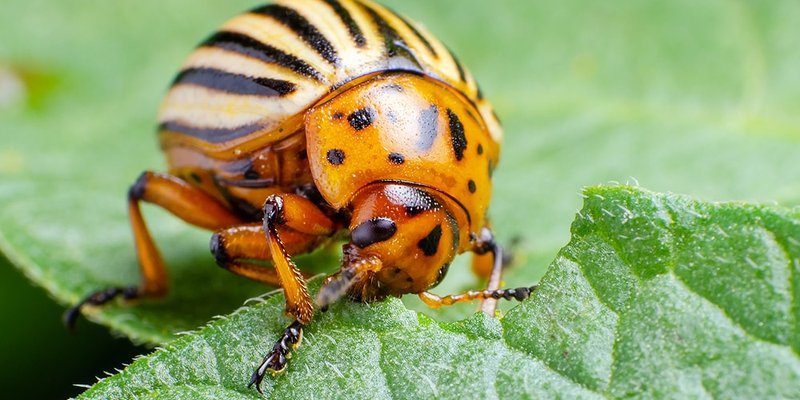
So, let’s sip on our virtual coffee and dive into some of the most common misconceptions about beetles. Understanding what’s true and what’s not can deepen our appreciation for these little critters. Who knows, you might even become a beetle enthusiast by the end of this!
Myth 1: All Beetles Are Pests
You might think that all beetles are nothing more than pesky invaders. But here’s the thing: while some species, like the Japanese beetle, can destroy crops and gardens, many beetles play crucial roles in our ecosystems.
For instance, ladybugs are actually beetles! They help control aphid populations in gardens and farms, acting as nature’s pest control. Plus, many beetles contribute to decomposition by breaking down dead plant material and recycling nutrients back into the soil.
So, while it’s easy to label all beetles as nuisances, it’s essential to recognize that many are beneficial and necessary for a healthy environment. Embracing the good alongside the bad gives us a balanced perspective of these creatures.
Myth 2: Beetles Are All Small
If you think of beetles as tiny bugs, you might be surprised to learn that some species can be quite large! The Goliath beetle, for example, can grow up to 4.3 inches long. That’s bigger than some of your average-sized pets!
These hefty guys are native to Africa and are known for their impressive size and striking colors. On the flip side, there are also very tiny beetles, like the featherwing beetle, which can be less than 1 millimeter long.
So, size-wise, beetles come in all shapes and dimensions. Whether you’re a fan of the small and delicate or the big and bold, there’s likely a beetle to match your preference.
Myth 3: Beetles Only Live in Dirty Places
You’ve probably heard someone say, “Ew, it must be dirty if there are beetles!” But that isn’t true. Beetles thrive in diverse environments, not just filthy ones.
Take the firefly beetle, for example. These beautiful creatures light up summer nights and are generally found in healthy, well-maintained gardens. On the other hand, some beetles are found in specific habitats, like rotting wood or decomposing leaves, which are essential for nutrient recycling.
So, while you might stumble across beetles in less-than-ideal spots, that doesn’t mean they prefer those areas. They’re simply doing their part in the ecosystem.
Myth 4: Beetles Are Dangerous to Humans
When it comes to bugs, it’s common to associate them with harm. However, most beetles are completely harmless to humans. Sure, some species can bite, but they generally do so only when threatened.
For instance, the bombardier beetle can spray a hot chemical as a defense mechanism, which sounds alarming. Yet, it’s not a danger to humans in everyday situations. Most beetles live peacefully around us, contributing to the ecosystem and even benefiting our gardens.
So if you see a beetle, don’t panic! They’re more interested in buzzing around and finding food than bothering you.
Myth 5: Beetles Can’t Fly
You might be surprised to hear this, but many beetles can fly! Just take a moment to observe the Japanese beetle or the rose beetle. They have hard outer shells called elytra, which they lift to reveal their wings when it’s time to take to the skies.
Interestingly, not every beetle can fly. Some, like the bark beetle, are adapted to live within the confines of trees and don’t develop wings. But the ability to fly is actually quite common in beetles, and it helps them find food, mates, and new habitats.
So next time you see a beetle, keep your eyes peeled; it might just take off for a short flight!
Myth 6: All Beetles Are Nocturnal
It’s easy to think of beetles as nighttime creatures since many, like fireflies, are active after dark. However, plenty of beetle species are diurnal, or active during the day, like the ladybug.
The time of day a beetle is active often depends on its environment and what it’s searching for. In fact, some beetles are crepuscular, meaning they’re active at dawn and dusk.
So, while some beetles might be night owls, many prefer to soak up the sun during the day. This diversity in behavior is just another reason why beetles are so fascinating!
Myth 7: Beetles Are All Black
If you think of beetles as just little black bugs, you’re missing out on a rainbow of colors! Beetles come in all hues—red, green, blue, and even metallic shades. The Asian lady beetle is a prime example, showcasing vibrant orange and red.
Their colors serve various purposes, from attracting mates to warding off predators. Some beetles even have patterns that look like camouflage, allowing them to blend in with the environment.
So don’t underestimate the beetle’s color palette! There’s a whole world of beauty hiding under those hardened shells.
Myth 8: Beetles Are All the Same
With over 350,000 species, it’s easy to assume beetles are a homogeneous group. However, they are incredibly diverse and can differ significantly in diet, habitat, and behavior.
For example, weevils have long snouts and feed on plants, while scarab beetles are often associated with ancient Egypt and have unique behaviors related to dung.
This diversity helps them thrive in various environments, and understanding these differences makes us appreciate their role in ecosystems even more.
In conclusion, beetles are much more than just bugs. They are vital players in our ecosystems, beautiful in their diversity, and surprisingly complex in behavior. Next time you spot one, take a moment to consider the intricate roles they play and the misconceptions that surround them. The world of beetles is waiting for you to explore!

